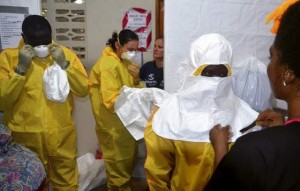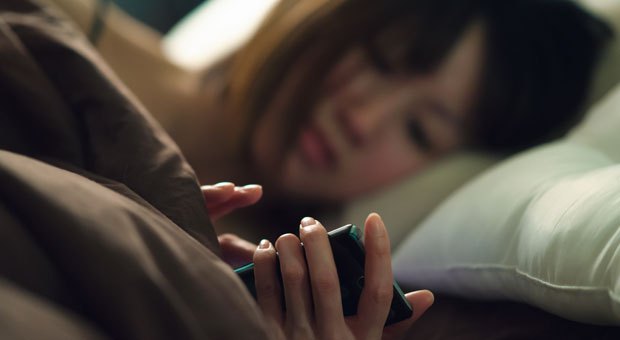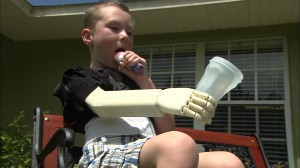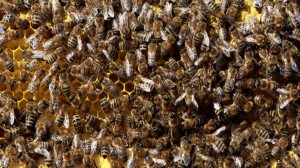The Ebola virus, which has infected two U.S. humanitarian workers in Liberia, is only a short plane ride from any city on Earth. But federal health officials say it’s not a big worry for most Americans.
Ebola is causing the worst outbreak ever seen right now, in three West African countries — Liberia, Sierra Leone and Guinea. It’s infected at least 1,200 people and killed more than 670 of them. Among those infected are a doctor working with the charity group Samaritan’s Purse, and a colleague working with a related group called Serving In Mission.

Ebola has also been carried outside the region, by a traveler on a flight that ended in Lagos, Nigeria — a mega city of 21 million people. The traveler, a Liberian citizen named Patrick Sawyer, was isolated soon after he collapsed, and he later died.
It’s the first time this virus has moved by jet, even though public health experts love to warn that any disease is just a flight away from anywhere with an airport.
But it’s unlikely to come as far as the U.S., the Centers for Disease Control and Prevention says.
“Ebola poses little risk to the U.S. general population,” Stephan Monroe of CDC’s National Center for Emerging & Zoonotic Infectious Diseases told reporters in a conference call. It’s because you have to be in direct contact with someone who is ill to become infected.
“Transmission is through direct contact with the bodily fluids of an infected person,” Monroe said. That includes vomit, blood or diarrhea. “Individuals who are not symptomatic are not contagious,” he said.
The incubation period can last for as long as 21 days, meaning it can take 21 days for someone to develop symptoms after being in contact with an infected person. So in theory, someone could be infected and get on a plane to travel to the U.S. before he or she got sick. But the odds of this are low.
Liberia closed some borders over the weekend to help control the spread of the virus, but the World Health Organization doesn’t recommend any travel restrictions yet. Liberia left its airport in Monrovia open, as well as major border crossings where there are facilities to watch for people with possible symptoms of Ebola, which include fever and vomiting.
There’s no need to control travel in and out of the U.S. CDC says. It has quarantine stations in major airports and agents can forcibly isolate or quarantine people with symptoms of Ebola and other diseases such as cholera, tuberculosis, plague or bird flu.
Careful questioning can usually rule out a disease such as Ebola. In this case, it would be asking people if they’ve been to West Africa in recent weeks or in close contact with someone who had been and who was ill.
U.S. health experts pulled this off with MERS — the Middle East Respiratory Syndrome virus, which was carried into the country twice by travelers, both of whom recovered fully without infecting anybody else.
“The likelihood of this spreading out of West Africa is very low,” Monroe said. While it’s possible someone ill could get on a plane, they couldn’t spread the virus to someone who just happened to be sitting nearby. “It is very unlikely they would be able to spread disease to their fellow passengers,” Monroe said. CDC worries more about airborne viruses such as measles, which can spread silently.
“People are not infectious prior to becoming symptomatic,” he stressed. And once in the U.S., doctors should isolate a patient quickly. “We are fairly confident that the standard of care in the U.S. would prevent much of the transmission of the virus were to show up here,” Monroe said.
“We do not anticipate this will spread in the US if an infected person is hospitalized here but we are taking action now by alerting healthcare workers in the US and reminding them how to isolate and test suspected patients while following strict infection control procedures.” CDC Director Dr. Tom Frieden added in a statment.
Experience in Africa shows those who become infected have been caring for a patient with Ebola, or preparing the body for burial, both of which can bring then into contact with body fluids. Accidental needle sticks have also infected scientists and health care workers.
But Ebola, like any virus, is tricky. They can all look the same — people have fever, they feel terrible and they may be throwing up. Only about half of all Ebola cases show the bleeding that so frightened people, and that’s only in very advanced cases.
So the standard is the same with any infectious disease. People showing symptoms such as fever, cough or vomiting should be isolated as soon as they come into a medical facility, and all staff who come into contact should be gloved, gowned and masked.
Just to be sure, CDC has issued a “level 2” alert, which cautions people in the affected region to avoid contact with anyone who seems infected.
CDC also issued a health alert, a reminder to doctors in the U.S. “Ebola virus disease poses little risk to the U.S. general population at this time. However, U.S. healthcare workers are advised to be alert for signs and symptoms of Ebola virus disease in patients with compatible illness who have a recent (within 21 days) travel history to countries where the outbreak is occurring, and should consider isolation of those patients meeting these criteria, pending diagnostic testing,” it reads.
Source: nbcnews




















